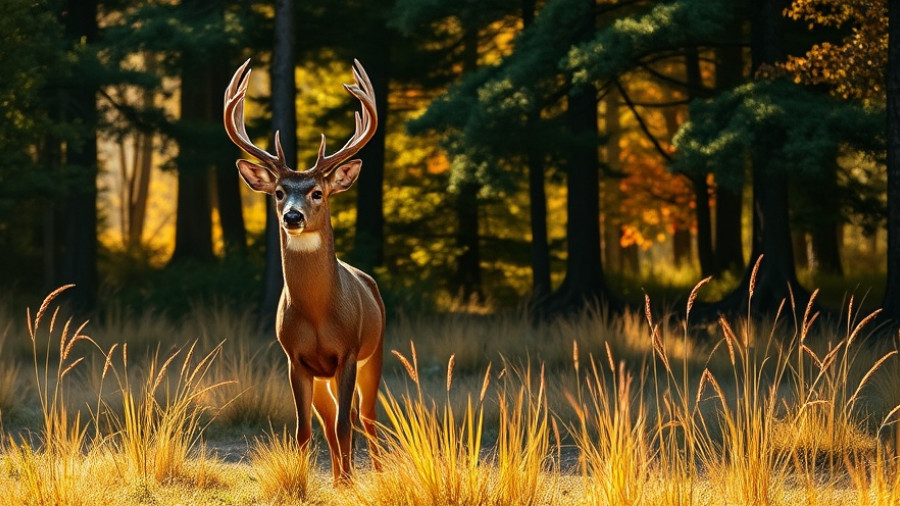
Understanding the Whitetail Rut: A Rhythmic Cycle
As autumn sweeps across Pennsylvania, transforming the landscape into a vibrant palette of colors, the whitetail rut emerges, bringing life to the woodlands and echoing the rhythms of nature. Typically peaking in early to mid-November, the rut marks the fervid breeding season of white-tailed deer, compelling bucks to leave behind their usual caution in search of does. This annual spectacle not only highlights the majesty of wildlife but also serves as a call to nature enthusiasts and those who cherish outdoor experiences.
The Dance of Bucks and Does: Hormonal Shifts and Instincts
During the rut, deer undergo significant physiological changes triggered by decreasing daylight hours. Bucks, driven by instinct and hormones, abandon their summer bachelor groups and roam far and wide. They send out their presence through various behavior patterns, including scraping the earth and rubbing trees, a display meant to mark territory and attract potential mates. These behaviors not only attract receptive does but also signal dominance to other bucks.
Interestingly, the pursuit of a doe in estrus often reveals a dramatic scene: multiple bucks can be seen in hot pursuit, their singular focus heightening the thrill for onlookers. This intense competition often leads to increased deer activity throughout the day—a prime window for wildlife watchers and hunters eager to witness this natural drama.
The Risks and Rewards of the Rut: A Matter of Survival
While the drive to breed propels bucks into the open, it also brings inherent risks. Increased deer activity raises the likelihood of deer-vehicle collisions, especially as they dart across highways. The rut also demands much energy, leaving bucks depleted entering winter months. Despite these perils, the concentrated breeding period maximizes the chances of survival for fawns, ensuring they are born in late spring, when conditions for growth and nourishment are optimal.
Beyond the Hunt: The Emotional Connection to Nature
The whitetail rut weaves a deeper narrative—a connection that resonates with many Pennsylvanians. It symbolizes tradition, community, and the unblemished beauty of the natural world. Families headed into the woods to experience this event together foster bonds echoed in the stories of generations prior. The rustle of autumn leaves underfoot and the crisp morning air provide an immersive backdrop, making each outing a precious memory.
Addressing Misconceptions: The Influence of the Moon on the Rut
Many hunters and outdoor enthusiasts have long speculated about the effects of the lunar phases on deer movement, particularly during the rut. Some associate the “rutting moon,” the second full moon after the autumn equinox, with increased breeding activity. However, thorough studies indicate that, while there may be a correlation, it’s primarily the photoperiod—actual length of daylight—that dictates breeding timings, rather than lunar activity. Therefore, hunters can plan their outings without the need to adjust for lunar phases.
Upcoming Events: Embrace the Seasonal Spirit
For those who wish to immerse themselves even more in autumn's splendor, a variety of community events across Pennsylvania foster engagement with nature and culture. Whether participating in a watercolor class or learning to make your own wreath, these activities celebrate the season and the connections it fosters.
Conclusion: Join the Celebration of Nature
The whitetail rut presents a colorful canvas of wildlife behavior, nostalgia, and community connection during Pennsylvania’s autumn months. Whether you're a passionate hunter, a wildlife watcher, or simply someone looking to enjoy the great outdoors, this season serves as a reminder of nature’s endless cycles. So gather your family, head into the woods, and make the most of this vibrant time of year!
 Add Row
Add Row  Add
Add 




Write A Comment